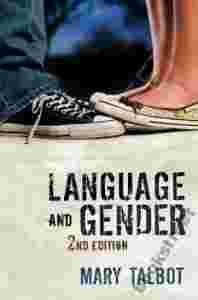|
This new edition of Language and Gender has been
thoroughly revised and updated, including the addition
of entirely new chapters that explore recent work in the
field. A range of approaches is covered at an
introductory level, presenting sometimes difficult and
complex issues in an understandable way. Every chapter
concludes with a list of recommended readings so that
each topic can be taken further. Like the first edition,
it will be popular with students for its accessibility
and with teachers for the range and depth it achieves in
a single volume. As in the first edition, the book is
organised into three parts. An introductory section
provides preliminary grounding in early 'classic'
studies in the field. In the second section, Talbot
examines the language used by women and men in a variety
of speech situation and genres. She addresses a range of
issues and problems, including the difficulties arising
from accounting for gender differences in terms of
dichotomies like public vs private and informational vs
affective and, not least, the trouble with looking for
'differences' at all. Talbot's emphasis, however, is on
recent research.The last and largest section examines
not gender difference but the construction and
performance of gender in discourse. It includes new
chapters outlining recent research on women's talk in
public contexts and on language, gender and sexualities.
The section as a whole reflects both the high degree of
interest in mass media and popular culture found in
recent language and gender research and the
preoccupation with discourse and social change that is
central to Critical Discourse Analysis. The second
edition of Language and Gender will become a key
textbook for undergraduates and postgraduates in
linguistics, sociolinguistics, cultural and media
studies, gender studies and communication studies. The
book is usable by students for whom it their first, or
only, contact with sociolinguistics. |
|

